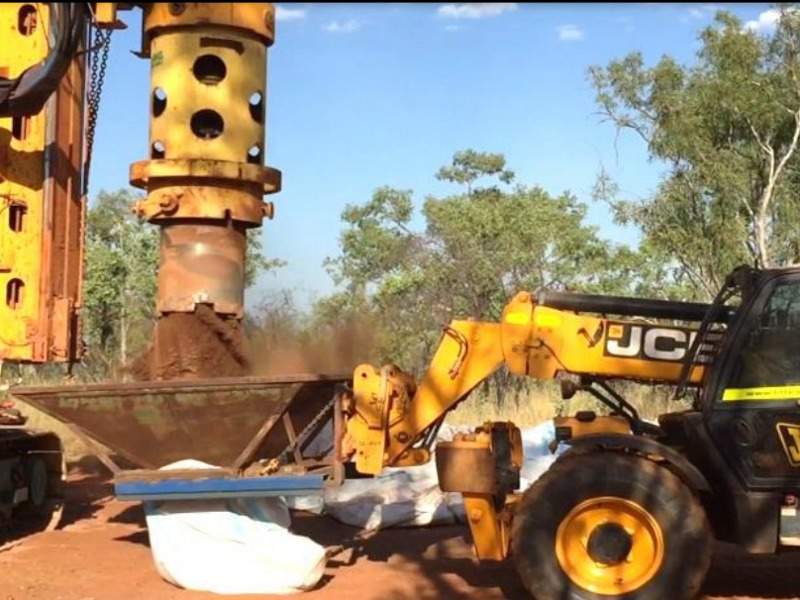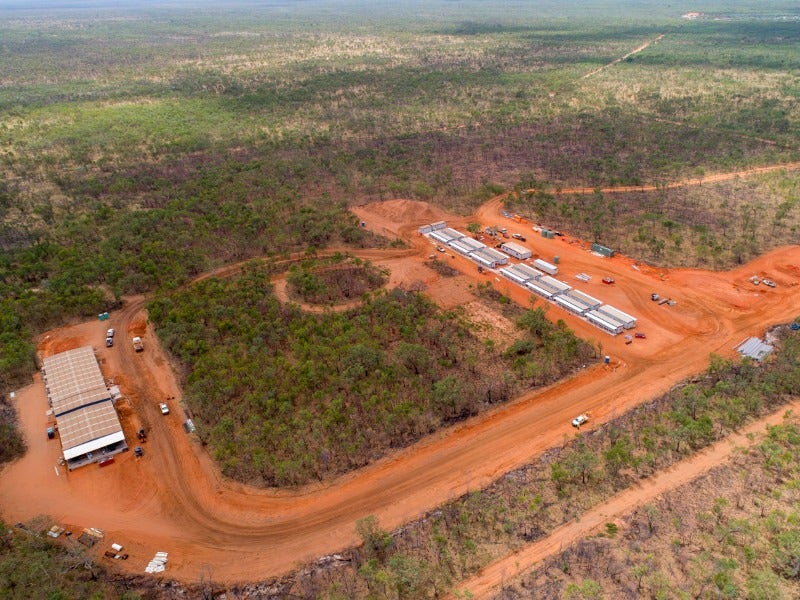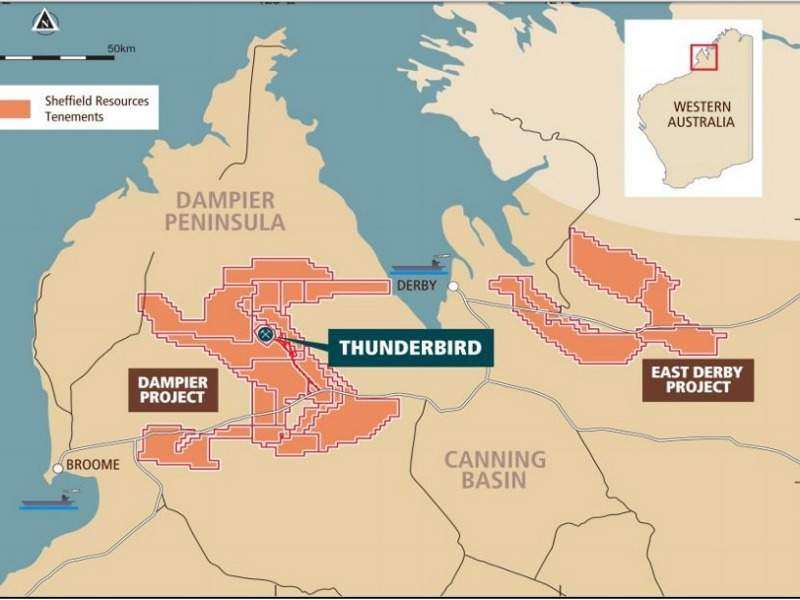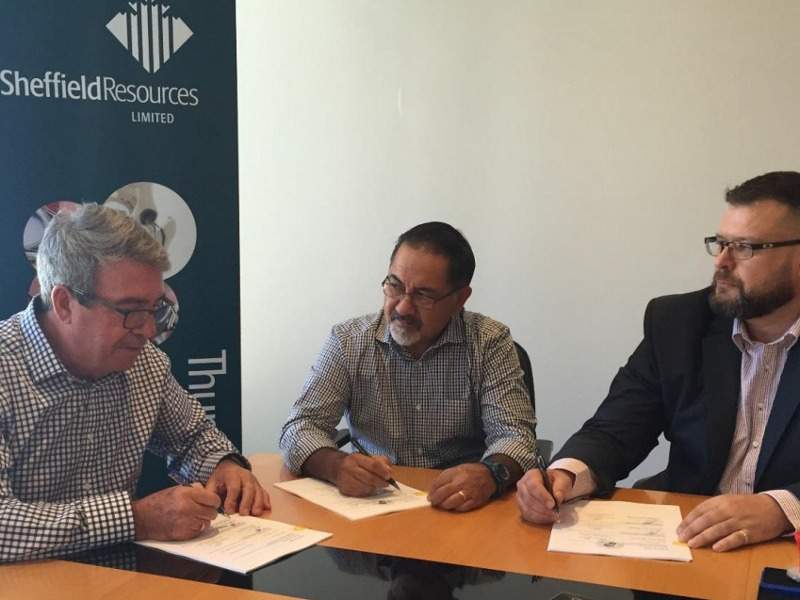Thunderbird mineral sands project, located on the Dampier Peninsula, approximately 65km west of Derby, Western Australia, represents one of the world’s biggest undeveloped mineral sand deposits.
The project is being developed in two stages by Sheffield Resources with the stage one development estimated to incur an investment of A$463m ($332m).
The Thunderbird project involves a greenfield open-cut mine to extract zircon and ilmenite-rich mineral sands and an on-site mineral separation plant.
A bankable feasibility study (BFS) for the project was released in March 2017, which forecasted an annual throughput of 12 million tonnes per annum (Mtpa) during the first eight years of production in stage one development of the project. The production can be increased to 18Mtpa for the remaining 32 years of the estimated 40-year production life, in stage two.
Sheffield Resources started early preparatory works and awarded the engineering, procurement, and construction (EPC) contract for the project towards the end of 2018.
Construction on the project is expected to begin in April 2019, while start of production is expected in 2020.
Thunderbird mineral sands project geology
The Thunderbird mineral sands deposit is located 6km down deep along a strike length of 4km. It is underlain by Phanerozoic rocks of the Canning Basin, which consists of sedimentary rock formations of the Cretaceous age.
Reserves
The Thunderbird mine is estimated to hold 3.23 billion tonnes of measured, indicated and inferred mineral resources grading 6.9% heavy minerals (HM), containing 8.6Mt of zircon, 5.9Mt of high-titanium leucoxene, 6.5Mt of leucoxene, and 61.7Mt of ilmenite.
The proven and probable reserves of the Thunderbird project are estimated to be 680.5Mt, grading 11.3% HM.
Mining and processing for the Thunderbird mineral sands project
The Thunderbird mineral sands project will be a large open-cut mining operation starting from the north-eastern part of the deposit and heading towards the southern direction.
The mining operation will employ strip mining and backfill methods using a dozer trap unit.
The run-of-mine (RoM) ore will be fed to two 810t/h skid-mounted dozer trap mining unit plants (MUPs) using two dozers. The mining fleet will also include loaders, 100t trucks, excavators, scrapers, and four quad road trains.
The mineral processing will be carried out on a conventional heavy mineral sands processing circuit.
The ore slurry from the MUPs will be pumped to the wet concentrator plant (WCP), where it will undergo screening and deslimming on dual cyclone clusters.
The cyclone underflow will be sent to two identical gravity circuits, while the overflow will be moved to a deep cone thickener for recovery of process water.
The heavy mineral concentrate (HMC) obtained will be slurried and pumped to the mineral separation plant (MSP) and screened at the concentrate upgrade plant (CUP). The undersized HMC will be separated using magnetic and gravity separation method to produce magnetic and non-magnetic concentrate and tailings.
The magnetic concentrate will be sent to the attritioner and then to an ilmenite dry plant (IDP), where it will be taken through screening and electrostatic separators to produce primary ilmenite. It will then be passed through a low-temperate roasting (LTR) plant to produce high-grade ilmenite final product.
The non-magnetic concentrate will be processed in spiral concentrators and moved to the hot acid leach plant (HAL), where surface cleaning of mineral grains will take place. The resultant material will be attritioned before being passed through a primary electrostatic circuit and magnetic separation to produce HiTi88 leucoxene and zircon concentrate.
The final products will be transported using road trains along the Great Northern Highway to the Derby Wharf for overseas export.
Financing
Taurus Mining Finance Fund agreed to provide debt financing of $200m for the project in the last quarter of 2017.
Northern Australia Infrastructure Facility (NAIF) has also agreed to provide an A$95 ($68m) loan for the project, in September 2018.
Off-take agreements
Sukaso Ceracolors Ceramics, a company based in India, and European ceramics company CFM Minerales agreed to off-take 12,000t and 4,000t of zircon from the project for a period of five years, in September and October 2017, respectively.
A maiden binding off-take agreement was also signed with Ruby Ceramics, a company based in India, for annual supply of 6,000t of zircon for a period of three years, in September 2017.
Chinese company Hainan Wensheng High-Tech New Materials signed a five-year agreement to off-take 27,000t of premium zircon in January 2018. It was followed by an agreement with China’s Qingyuan Jinsheng ZR & TI Resources to off-take 9,000t of zircon.
Sheffield also signed a maiden binding off-take agreement with Bengbu Zhongheng New Materials to supply 150,000t of ilmenite for a period of five years.
Infrastructure facilities
Thunderbird project can be accessed by the existing Great Northern Highway. The project involves the construction of additional internal access and haul roads and an all-weather access road along Mt Jowlaenga Road to the Great Northern Highway.
A 16MW gas or diesel-fired power station is planned to be developed to supply electricity to the Thunderbird mineral sands operation.
The project will be supplied with water from the onsite borefields.
The other infrastructure facilities for the project include an accommodation camp for 350 workers, a tailings storage facility, and administration offices.
Contractors involved
GR Engineering Services (GRES) was awarded the engineering, procurement, and construction (EPC) contract for the Thunderbird mineral sands project in November 2018.
It was also previously awarded an early works agreement for the project in October 2017.
Hatch was engaged for the preparation of the BFS for the project, while Roundhill Engineering, IHC Robbins, and Hazen Laboratories were engaged for mineral testing.
TZMI, ATC Williams, RCR Mining Technologies, and EPMS were the consulting firms engaged for the preparation of pre-feasibility study (PFS) for the project in 2015.
The Quantitative Group provided resource estimation services, while Resource Engineering and Design carried out infrastructure studies and Entech provided pit optimization and mine scheduling services during the PFS phase of the Thunderbird mineral sands project.






